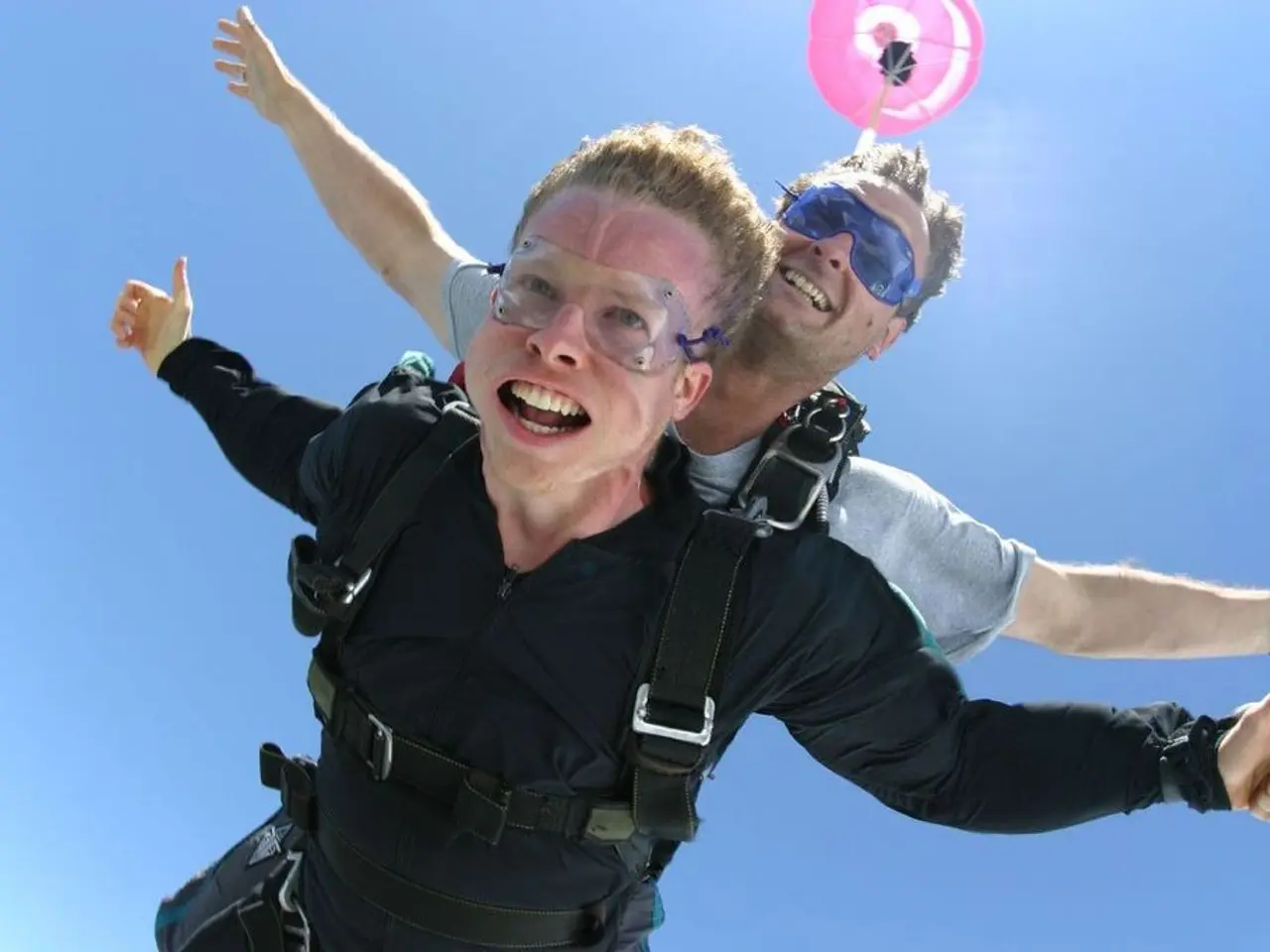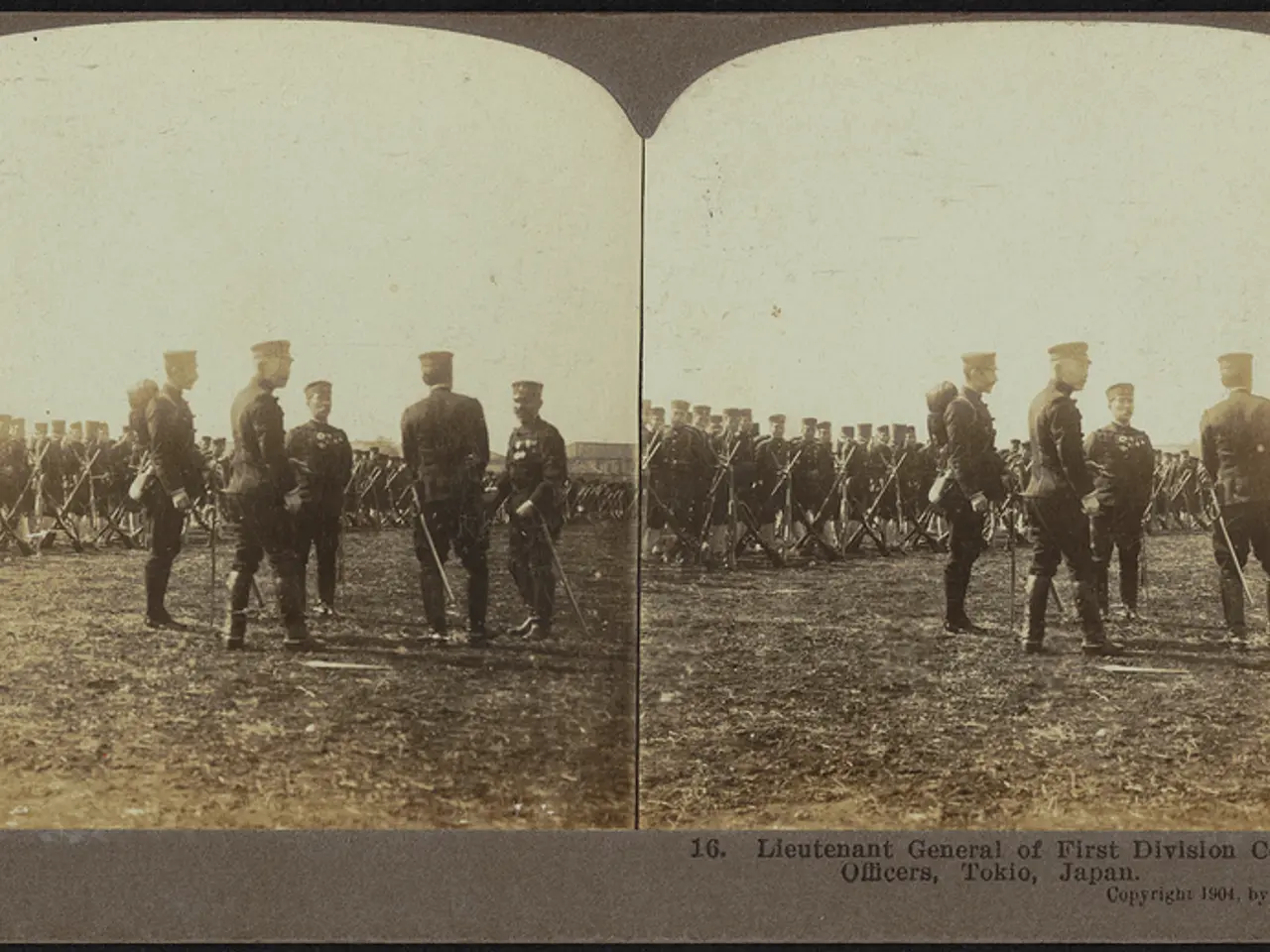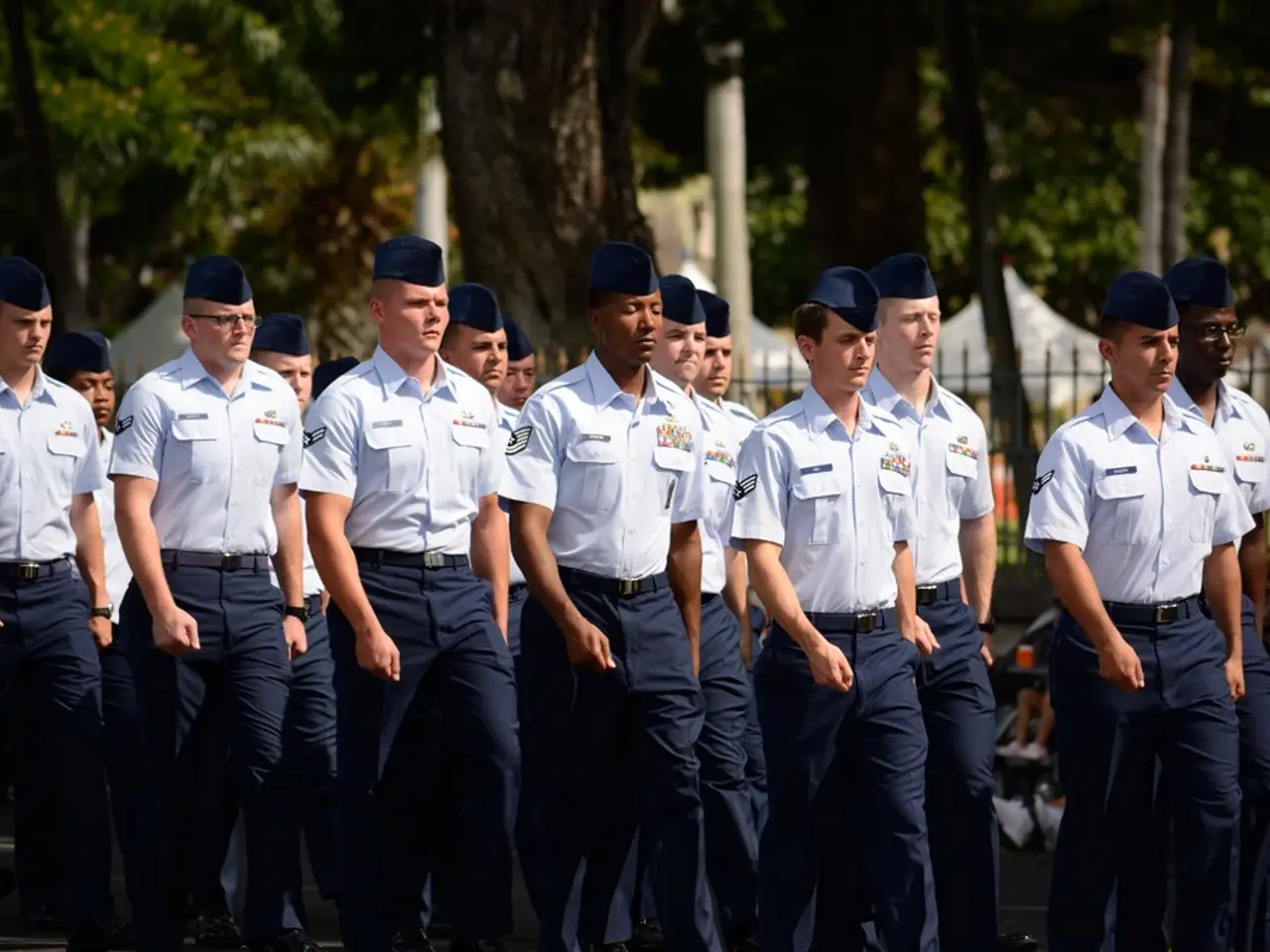Newcomers Tackle Leap for the First Time
Before embarking on a thrilling skydive, a meticulous gear check is an essential part of the pre-jump routine. This systematic process, known as the "Check of 3's," is crucial for maintaining safety and reducing the risk of equipment malfunctions.
The Check of 3's involves verifying three critical aspects at three key times: before putting on your equipment, before boarding the plane, and before exiting the aircraft. At each stage, you confirm three main items:
- Your own equipment is correctly worn and secured.
- Your buddy’s equipment (if applicable) is inspected.
- Your immediate surroundings and readiness are confirmed—including altimeter settings, helmet fit, and secure harness connections.
This triple-check process minimizes human error by emphasizing redundancy at every critical point.
In addition to the Check of 3's, adherence to the United States Parachute Association’s (USPA) comprehensive gear safety guidelines is paramount. According to the USPA’s guide to gear checks:
- Always inspect the main parachute, reserve parachute, and harness/container system thoroughly before each jump to ensure no damage, excessive wear, or improper packing.
- Check the reserve deployment handle and pilot chute for correct installation and condition.
- Ensure ripcord pins are secure, cutaway handle is properly positioned, and leg and chest straps are fastened and snug.
- Confirm the altimeter is working and visible, helmet is secure, and goggles are properly fitted.
- Professional repacking of parachutes is advised approximately every 180 days or per local regulations to maintain equipment reliability.
Performing these steps consistently before every skydive, including the Check of 3's at each pre-jump stage, helps maintain safety and reduces the risk of equipment malfunctions. Visual aids and step-by-step checklists recommended by skydiving training organizations should be used as part of your routine.
Skydiving gear checks on the ride to altitude are the last chance to catch any issues before the jump. The Check of 3's quick reference table is provided for better gear awareness. The gear check culture is part of what makes skydiving safe and tight-knit. Load organizers at Skydive Arizona help skydivers improve their game safely.
Using phones during gear check is discouraged as it distracts from full attention. During the Check of 3's, it's important to also ensure that the Automatic Activation Device (AAD) is turned on, the pilot chute is cocked and secure, and the pins are exactly where they belong. Verbalizing checks, especially for students and AFF, is encouraged.
On the ride to altitude, a recheck should be performed to catch anything that might've shifted in the rush. This includes feeling the handles, tugging the chest strap, glancing down at the three rings, and looking around to be the buddy who checks a pin or calls out a misrouted bridle.
The gear check is not just a checklist, but a mindset that keeps things tight and trouble-free. Skydive Arizona’s gear checks are not just rules, but a part of their skydiving culture. The mental final pass method for gear check is called SHAGG (Shoes, Helmet, Altimeter, Goggles, Gloves).
The skydiving gear checks checklist includes items such as the main handle, chest, leg, and belly straps, AAD, bridle routing, helmet, goggles, and altimeter. Gear check culture at Skydive Arizona is ingrained and considered second nature. Fun jumpers, tandems, and teams at Skydive Arizona frequently check each other's gear.
Trust in skydiving is built on habits, and the Check of 3's is one such habit. The practice of a gear check is essential before every skydive, performed by seasoned skydivers from first-timers to world record holders. The Check of 3's has been a habit that's kept jumpers safe and flying high for decades.
Skydiving is a sport where safety precautions, such as the Check of 3's, play a crucial role in maintaining gear awareness and reducing equipment malfunctions. This triple-check process involves verifying three critical aspects at three key times: before putting on your equipment, before boarding the plane, and before exiting the aircraft. Additionally, adherence to the United States Parachute Association’s (USPA) comprehensive gear safety guidelines is paramount, as they provide detailed instructions on inspections, repacking, and gear checks before each jump.






